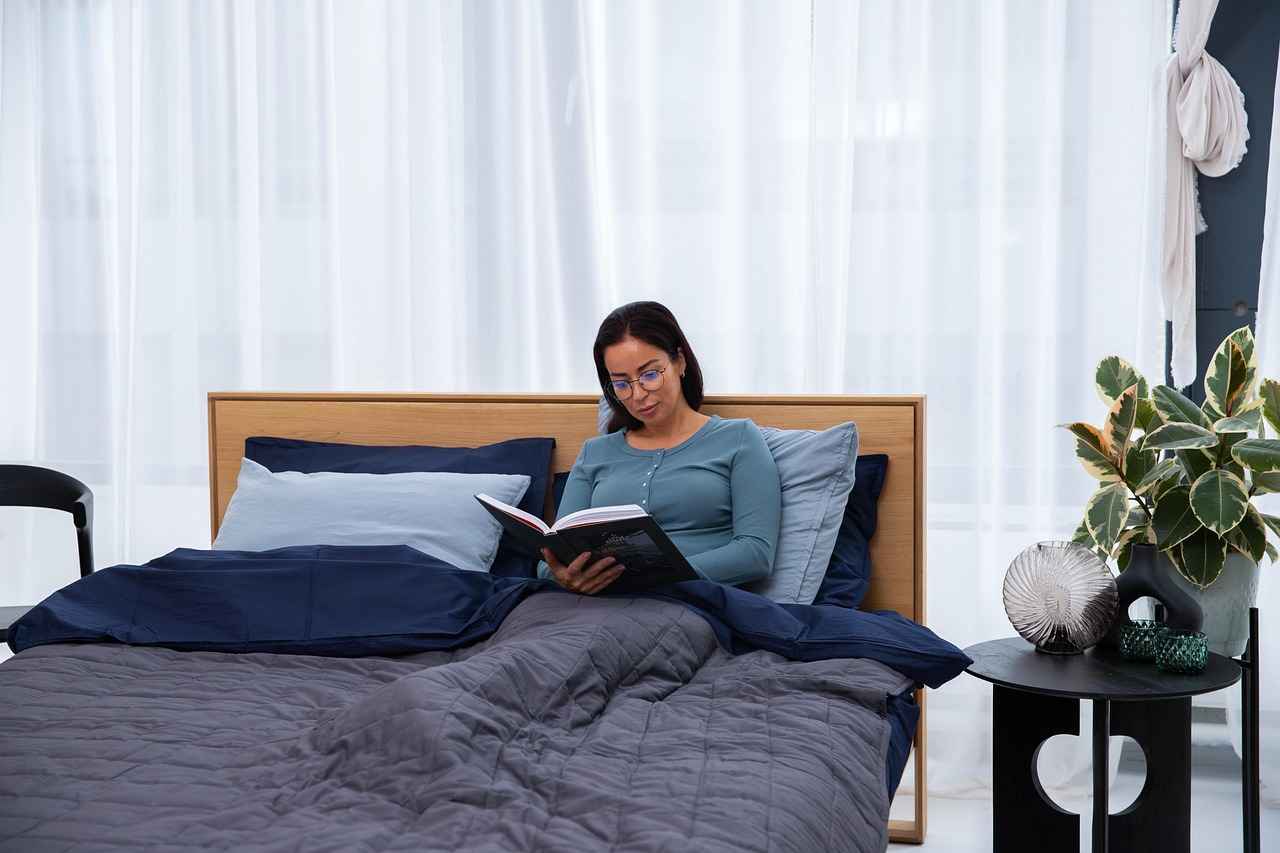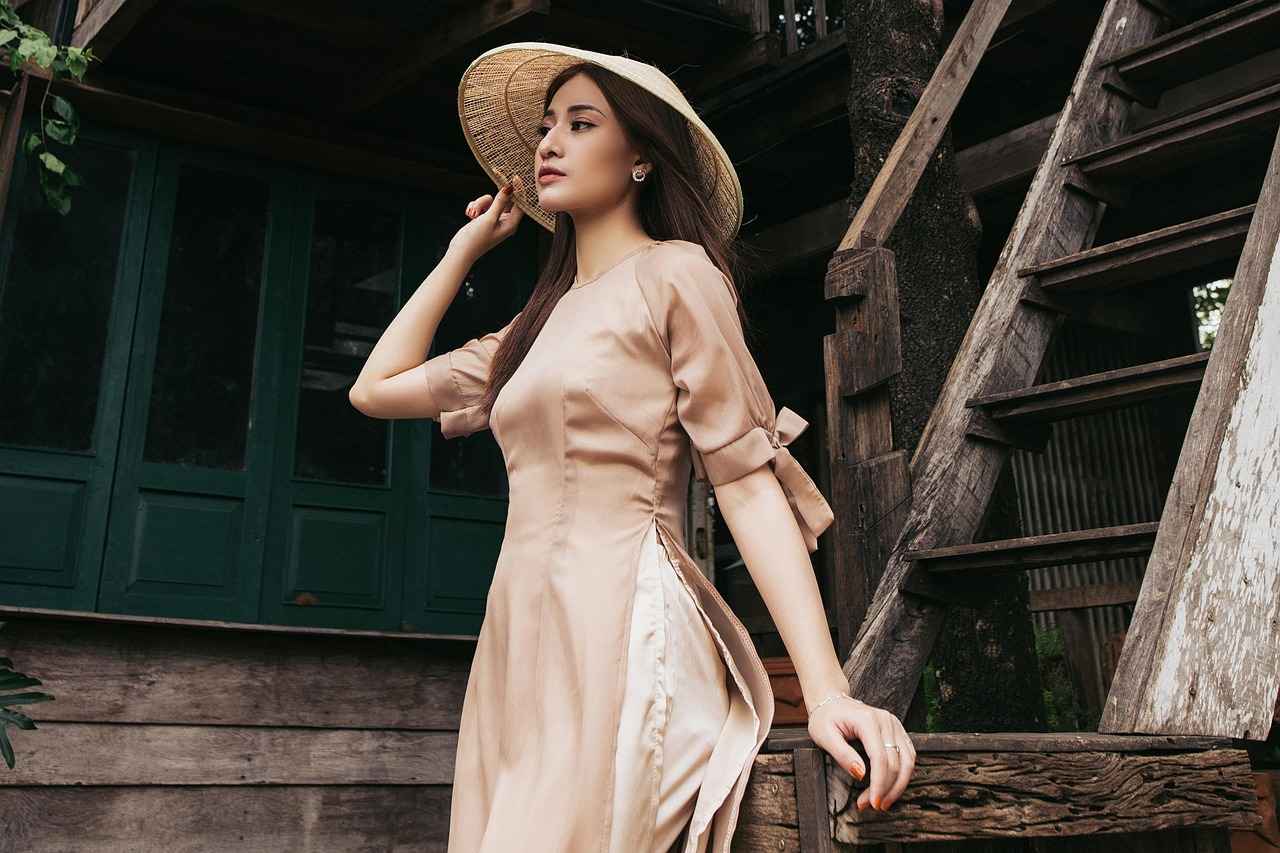This article delves into the importance of quality sleepwear, exploring how it affects sleep quality, comfort, and overall well-being. Understanding the right materials and styles can lead to more restful nights and improved health.
What Makes Sleepwear Important for Quality Sleep?
Sleepwear plays a crucial role in enhancing sleep quality. The right night dress can regulate body temperature and promote comfort, leading to more restorative sleep. Poorly chosen sleepwear can lead to discomfort, overheating, or restriction of movement, all of which can hinder a good night’s rest.
How Does Fabric Choice Affect Sleep Quality?
The fabric of your sleepwear significantly influences your comfort. Breathe easy with natural materials like cotton and bamboo, which help maintain optimal body temperature. In contrast, synthetic fabrics can trap heat and moisture, leading to an uncomfortable sleeping experience.
- Natural Fabrics vs. Synthetic Fabrics: Natural fabrics like cotton and bamboo are often more breathable and hypoallergenic, while synthetic options may offer durability and moisture-wicking properties.
- Benefits of Cotton Sleepwear: Cotton is favored for its softness, breathability, and moisture absorption, making it ideal for a comfortable night’s sleep.
- Why Choose Bamboo Sleepwear? Bamboo sleepwear is eco-friendly and moisture-wicking, providing a soft, luxurious feel against the skin.
Impact of Sleepwear Fit on Sleep Quality
The fit of your sleepwear can significantly influence your comfort during sleep. Loose-fitting garments allow for better movement, while tight-fitting styles may restrict circulation and cause discomfort, ultimately impacting your sleep quality.
What Features Should You Look for in Sleepwear?
When selecting sleepwear, consider features such as breathability, moisture-wicking capabilities, and ease of movement. These elements contribute to a more restful sleep environment.
- Moisture-Wicking Properties: Sleepwear with moisture-wicking properties helps draw sweat away from the skin, keeping you dry and comfortable throughout the night, especially beneficial for those who tend to overheat.
- Temperature Regulation in Sleepwear: Quality sleepwear should help regulate body temperature. Look for materials that adapt to your body’s needs, providing warmth in winter and coolness in summer.
How Do Sleepwear Styles Affect Comfort?
The style of sleepwear you choose can also impact your comfort level. From pajamas to nightgowns, each style offers different benefits and levels of comfort. Consider your personal preferences when selecting your sleepwear.
- Pajamas vs. Nightgowns: Which is Better? Pajamas provide a more structured fit, which some may find comforting, while nightgowns offer freedom of movement.
- Popular Sleepwear Trends to Consider: Staying updated on sleepwear trends can help you choose styles that enhance both comfort and functionality.
Is There a Connection Between Sleepwear and Mental Health?
Quality sleepwear can positively influence mental health by improving sleep quality. A comfortable night’s sleep can lead to better mood regulation and overall mental well-being.
Sleepwear and Its Role in Sleep Hygiene
Incorporating quality sleepwear into your sleep hygiene routine signals your body that it’s time to wind down, enhancing your overall sleep habits.
Creating a Sleep-Inducing Environment
Pairing quality sleepwear with a sleep-inducing environment, such as a dark, quiet room, can further enhance your sleep quality, making it easier to fall and stay asleep.
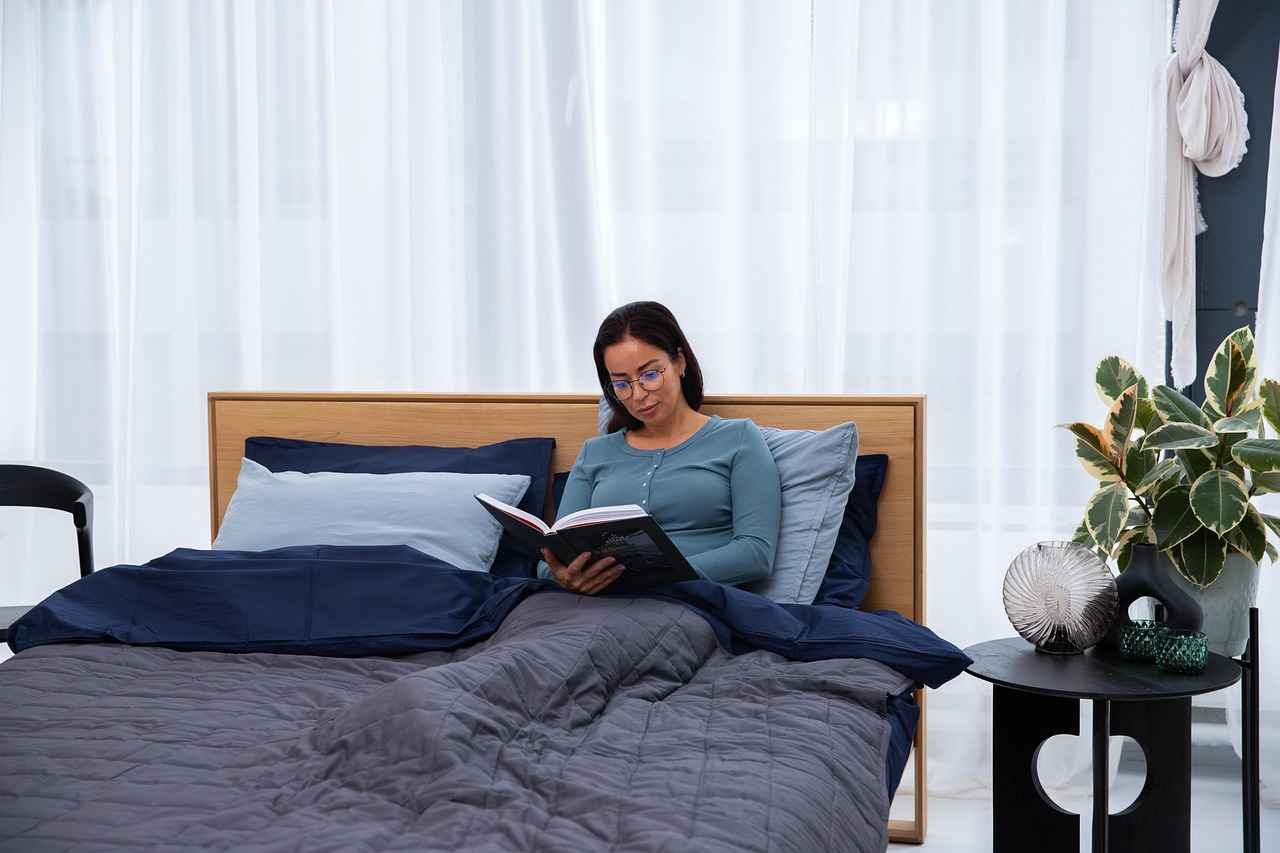
What Makes Sleepwear Important for Quality Sleep?
Understanding the significance of sleepwear in promoting quality sleep is essential for anyone seeking to enhance their nightly rest. The right night dress can play a pivotal role in regulating body temperature and ensuring optimal comfort, which ultimately leads to more restorative sleep.
The importance of sleepwear extends beyond mere aesthetics. It serves as a barrier between your body and the external environment, influencing how well you sleep. High-quality sleepwear is designed to maintain comfort throughout the night. When your body temperature is well-regulated, you are less likely to wake up due to overheating or feeling cold, both of which can disrupt sleep cycles.
The fabric of your sleepwear is crucial in determining your comfort level. Breathable materials such as cotton and bamboo are excellent choices, as they help maintain an optimal body temperature. In contrast, synthetic fabrics may trap heat and moisture, leading to discomfort and restless nights.
- Natural Fabrics: Typically more breathable and hypoallergenic, making them suitable for sensitive skin.
- Synthetic Fabrics: Often more durable and can offer moisture-wicking properties, but may not provide the same level of breathability.
Cotton is a popular choice for sleepwear due to its softness and breathability. It absorbs moisture effectively, which helps keep you dry and comfortable throughout the night. This natural fabric is also less likely to irritate the skin, making it ideal for those with sensitivities.
Bamboo sleepwear is becoming increasingly favored for its eco-friendliness and moisture-wicking properties. It is naturally antibacterial and provides a soft, luxurious feel against the skin. Additionally, bamboo fabric is known for its temperature-regulating qualities, making it suitable for year-round wear.
The fit of your sleepwear can significantly influence your comfort level during sleep. Loose-fitting garments allow for better movement and airflow, while tight-fitting styles may restrict circulation and lead to discomfort. It is essential to choose a fit that aligns with your personal preferences and sleeping habits.
When selecting sleepwear, consider features such as:
- Breathability: Essential for maintaining a comfortable temperature.
- Moisture-wicking capabilities: Helps keep you dry throughout the night.
- Ease of movement: Ensures you can change positions comfortably during sleep.
The style of sleepwear you choose can also impact your comfort level. From pajamas to nightgowns, each style offers different benefits:
- Pajamas: Provide a structured fit, offering a sense of security for some.
- Nightgowns: Allow for freedom of movement, ideal for those who prefer a looser fit.
Quality sleepwear can positively influence mental health by improving sleep quality. A comfortable night’s sleep leads to better mood regulation and overall well-being. Incorporating quality sleepwear into your sleep hygiene routine can signal your body that it’s time to wind down, enhancing your overall sleep habits.
Pairing quality sleepwear with a sleep-inducing environment, such as a dark, quiet room, can further enhance your sleep quality. This holistic approach ensures that you not only feel comfortable but also create the ideal conditions for restful sleep.
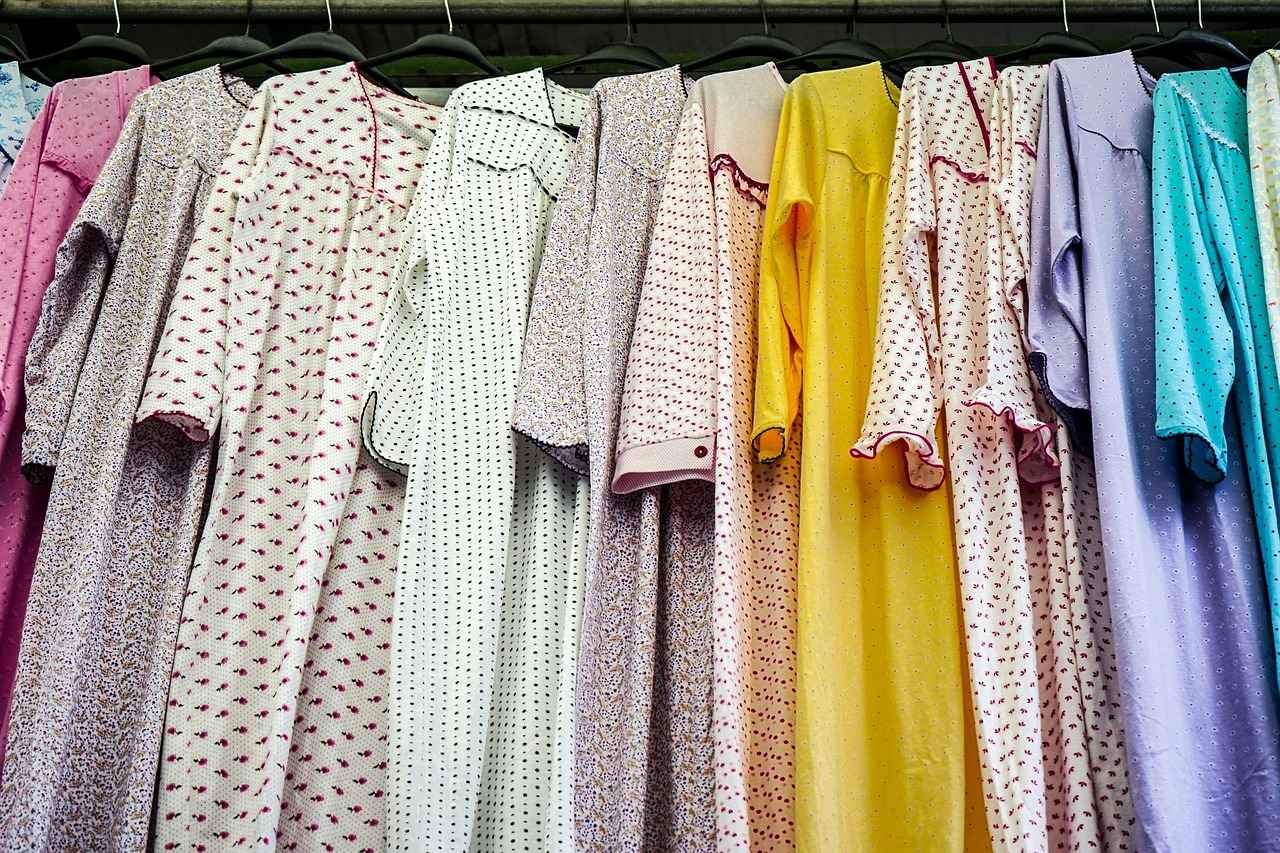
How Does Fabric Choice Affect Sleep Quality?
When it comes to achieving a restful night’s sleep, the fabric of your sleepwear is a crucial factor that often goes overlooked. The right materials can significantly influence your comfort, body temperature regulation, and overall sleep quality. In this section, we delve into how fabric choice directly impacts your sleep experience.
The fabric of your sleepwear plays a vital role in comfort. Breathable materials like cotton and bamboo are known for their ability to maintain an optimal body temperature, which is essential for quality sleep. In contrast, synthetic fabrics can often lead to overheating, disrupting your sleep cycle.
Choosing between natural and synthetic fabrics can significantly affect your sleep experience. Natural fabrics such as cotton and bamboo are often more breathable and hypoallergenic. They allow for better air circulation, which helps in moisture absorption and temperature regulation. On the other hand, while synthetic fabrics may offer benefits like durability and moisture-wicking properties, they can also trap heat, making them less ideal for a comfortable night’s sleep.
Cotton is a popular choice for sleepwear due to its softness, breathability, and ability to absorb moisture. This natural fiber helps keep you cool in the summer and warm in the winter, making it versatile for year-round use. Furthermore, cotton is gentle on the skin, reducing the risk of irritation and enhancing overall comfort.
Bamboo sleepwear is gaining popularity for its eco-friendliness and moisture-wicking properties. Bamboo fabric is naturally antibacterial, making it a great choice for those with sensitive skin. Additionally, its luxurious feel against the skin adds an element of indulgence to your nighttime routine.
The fit of your sleepwear can also influence your comfort level during sleep. Loose-fitting garments often allow for better movement and airflow, while tight-fitting styles may restrict circulation and cause discomfort. It’s essential to choose sleepwear that allows you to move freely, ensuring that you can shift positions comfortably throughout the night.
When selecting sleepwear, consider features such as breathability, moisture-wicking capabilities, and ease of movement. These elements contribute significantly to creating a restful sleep environment. Look for fabrics that not only feel good against your skin but also help regulate your body temperature.
Moisture-wicking sleepwear is designed to draw sweat away from the skin, keeping you dry and comfortable throughout the night. This feature is especially beneficial for those who tend to overheat during sleep, as it can help maintain a comfortable body temperature.
Quality sleepwear should aid in regulating body temperature. Look for materials that can adapt to your body’s needs, providing warmth in winter and coolness in summer. Fabrics like bamboo not only wick moisture but also offer excellent temperature control, making them ideal for all seasons.
The style of sleepwear you choose can also impact your comfort level. From pajamas to nightgowns, each style offers different benefits. Pajamas typically offer a more structured fit, which some may find comforting, while nightgowns provide freedom of movement. Your personal preference will dictate which style is best for you.
In summary, the fabric and fit of your sleepwear play a pivotal role in ensuring a good night’s sleep. By choosing breathable, moisture-wicking materials, you can enhance your comfort and overall sleep quality, paving the way for restorative rest.
Natural Fabrics vs. Synthetic Fabrics
When it comes to sleepwear, the choice between natural fabrics and synthetic fabrics can dramatically affect your sleep quality. Understanding the characteristics of each type of fabric is essential for making an informed decision that suits your personal needs.
Natural fabrics are made from fibers derived from plants or animals. Common examples include:
- Cotton: Known for its breathability and softness, cotton is a popular choice for sleepwear.
- Bamboo: This eco-friendly option is naturally moisture-wicking and antibacterial, making it ideal for sensitive skin.
- Silk: Luxurious and smooth, silk can help regulate body temperature and is hypoallergenic.
Synthetic fabrics, on the other hand, are man-made and often designed to enhance specific properties. Common synthetic materials include:
- Polyester: Durable and resistant to wrinkles, polyester is often used for its moisture-wicking capabilities.
- Nylon: Known for its strength and elasticity, nylon can provide a snug fit that some may prefer.
- Spandex: Added for stretch, spandex can enhance comfort and fit in sleepwear designs.
Natural fabrics like cotton and bamboo are breathable, allowing for better airflow and moisture absorption. This is crucial for maintaining an optimal body temperature during sleep. For those with sensitive skin or allergies, natural fabrics are often hypoallergenic, reducing the risk of irritation and promoting a more restful night.
Synthetic fabrics are engineered for performance. They often offer durability and can withstand frequent washing without losing their shape or color. Many synthetic sleepwear options feature moisture-wicking properties that draw sweat away from the body, keeping you dry and comfortable throughout the night. This can be particularly beneficial for individuals who tend to overheat while sleeping.
The choice between natural and synthetic fabrics ultimately depends on your personal preferences and needs. If you prioritize breathability and comfort, natural fabrics may be the way to go. However, if you are looking for durability and moisture management, synthetic options might better suit your lifestyle.
Yes, the fabric of your sleepwear can significantly influence your overall well-being. A good night’s sleep is essential for mental health, and wearing the right materials can contribute to that. For example, if you frequently wake up feeling hot or uncomfortable, it may be time to reconsider your fabric choice. Opting for breathable natural fabrics or moisture-wicking synthetics can help you achieve a more restful sleep.
When selecting sleepwear, consider the following factors:
- Climate: In warmer climates, breathable natural fabrics may be ideal, while cooler climates may benefit from the insulating properties of certain synthetics.
- Skin Sensitivity: If you have allergies or sensitive skin, natural fabrics like cotton or bamboo are often safer choices.
- Activity Level: For active sleepers or those who tend to sweat, moisture-wicking synthetic fabrics can enhance comfort.
In conclusion, understanding the differences between natural and synthetic fabrics can greatly enhance your sleep experience. By considering your personal needs and preferences, you can choose sleepwear that not only feels good but also supports your overall health and well-being.
Benefits of Cotton Sleepwear
Cotton sleepwear has become a staple in many wardrobes, and for good reason. It is widely recognized for its softness, breathability, and remarkable ability to absorb moisture. These characteristics make cotton an ideal choice for those seeking a comfortable and restful night’s sleep.
The popularity of cotton sleepwear can be attributed to its natural properties. Cotton is a natural fiber that allows air to circulate, helping to regulate body temperature. This feature is particularly beneficial for individuals who tend to overheat during the night, as it helps maintain a comfortable sleeping environment.
One of the primary reasons people choose cotton for sleepwear is its soft and gentle feel against the skin. Unlike synthetic fabrics, which can sometimes cause irritation or discomfort, cotton is hypoallergenic and less likely to trigger skin sensitivities. This makes it a great option for individuals with sensitive skin or allergies.
Cotton’s ability to absorb moisture is another significant advantage. It can wick away sweat, keeping you dry and comfortable throughout the night. This is especially important for those who experience night sweats or live in warmer climates. By drawing moisture away from the body, cotton sleepwear can help ensure a more restful sleep.
In addition to comfort and moisture management, cotton sleepwear is known for its durability. Quality cotton garments can withstand multiple washes without losing their shape or softness. This longevity makes cotton sleepwear a worthwhile investment, as it provides both comfort and value over time.
Cotton sleepwear comes in a wide range of styles, from classic pajamas to breezy nightgowns. This variety allows individuals to choose options that suit their personal preferences and sleeping habits. Whether you prefer a fitted pajama set or a loose nightgown, there is a cotton option available for everyone.
Another aspect to consider is the environmental impact of cotton. As a natural fiber, cotton is biodegradable and, when sourced responsibly, can be more sustainable than synthetic alternatives. Choosing organic cotton sleepwear can further reduce your ecological footprint, making it an eco-friendly choice.
To maintain the quality of your cotton sleepwear, it is essential to follow proper care instructions. Washing in cold water and avoiding harsh detergents can help preserve the fabric’s softness and color. Additionally, air drying is recommended to prevent shrinkage and extend the life of the garment.
In conclusion, the benefits of cotton sleepwear are numerous and significant. Its softness, breathability, and moisture-wicking properties make it an excellent choice for anyone looking to enhance their sleep quality. With its durability and variety of styles, cotton sleepwear not only provides comfort but also contributes to a more sustainable lifestyle. By investing in quality cotton sleepwear, you are choosing a path towards better sleep and overall well-being.
Why Choose Bamboo Sleepwear?
Bamboo sleepwear has emerged as a popular choice among consumers seeking comfort and sustainability. This eco-friendly fabric is not only gentle on the skin but also offers a range of benefits that enhance the quality of sleep. In this article, we will explore the compelling reasons to choose bamboo sleepwear and how it can contribute to a better night’s rest.
- Eco-Friendliness: Bamboo is a highly sustainable resource that grows rapidly without the need for pesticides or fertilizers. Choosing bamboo sleepwear supports environmental conservation.
- Moisture-Wicking Properties: One of the standout features of bamboo fabric is its ability to wick moisture away from the body. This keeps you dry and comfortable throughout the night, particularly beneficial for those who tend to sweat during sleep.
- Natural Antibacterial Qualities: Bamboo has inherent antibacterial properties, which help reduce odor and maintain freshness. This means your sleepwear will remain clean and pleasant, even after multiple wears.
- Softness and Comfort: The texture of bamboo fabric is incredibly soft, offering a luxurious feel against the skin. This softness enhances comfort, making it easier to relax and fall asleep.
- Temperature Regulation: Bamboo sleepwear helps regulate body temperature, keeping you warm in winter and cool in summer. This adaptability is crucial for maintaining optimal sleep conditions.
When comparing bamboo to traditional fabrics like cotton or polyester, bamboo stands out for its superior moisture management and breathability. While cotton is a popular choice due to its softness, it may not wick away moisture as effectively as bamboo. On the other hand, synthetic fabrics can trap heat and moisture, leading to discomfort during sleep.
Yes, bamboo sleepwear is considered hypoallergenic, making it an excellent choice for individuals with sensitive skin or allergies. The natural fibers are less likely to irritate the skin, providing a soothing option for those prone to skin reactions.
Bamboo sleepwear comes in various styles, catering to different preferences and needs. From cozy pajamas to elegant nightgowns, there is something for everyone. Here are some popular options:
- Pajama Sets: These typically include a matching top and bottom, providing a coordinated look that is both stylish and comfortable.
- Nightgowns: For those who prefer a more relaxed fit, bamboo nightgowns offer freedom of movement and a feminine touch.
- Robes: A bamboo robe can add an extra layer of comfort for lounging around the house or after a shower.
To maintain the quality of your bamboo sleepwear, it is essential to follow proper care instructions. Washing in cold water and avoiding harsh detergents will help preserve the fabric’s softness and antibacterial properties. Additionally, air drying is recommended to prevent shrinkage and maintain the garment’s shape.
Many retailers offer a variety of bamboo sleepwear options, both online and in physical stores. Look for brands that prioritize sustainability and quality to ensure you are making an eco-conscious choice. Reading customer reviews can also help you find the best products that meet your needs.
In summary, bamboo sleepwear is an excellent choice for those seeking a blend of comfort, sustainability, and functionality. With its numerous benefits, including moisture-wicking properties and natural antibacterial qualities, bamboo sleepwear can significantly enhance your sleep experience. Consider making the switch to bamboo for a more restful night’s sleep.
Impact of Sleepwear Fit on Sleep Quality
When it comes to achieving a restful night’s sleep, the fit of your sleepwear plays a crucial role. The right fit can significantly enhance your comfort level, affecting how well you sleep. This article delves into the impact of sleepwear fit on sleep quality, exploring how different styles can either promote relaxation or lead to discomfort.
The fit of your sleepwear can directly influence your overall sleep experience. Loose-fitting garments often allow for better movement and airflow, which can be essential for a good night’s rest. On the other hand, tight-fitting styles may restrict circulation, leading to discomfort that can disrupt your sleep.
Loose-fitting sleepwear is designed to provide freedom of movement. This is particularly beneficial for those who tend to toss and turn during the night. The added space allows for better circulation, which can help maintain a comfortable body temperature and prevent overheating. Additionally, loose garments can reduce the feeling of constraint, allowing you to relax more fully.
While some may prefer the snug fit of tight sleepwear, it can come with drawbacks. Tight garments can lead to restricted blood flow, which may cause discomfort and even wake you up during the night. Furthermore, if the fabric does not have adequate stretch, it can create pressure points that lead to restlessness.
When selecting sleepwear, it’s essential to consider both the fit and the material. A combination of breathable fabrics and a loose fit can enhance your sleep quality. For instance, cotton and bamboo are excellent choices as they are both soft and breathable, allowing for optimal comfort without compromising on style.
- Look for elastic waistbands and adjustable straps.
- Choose styles that allow for movement, such as wide-leg pants or flowy nightgowns.
- Consider sizes that accommodate your body shape without being overly tight.
Different styles of sleepwear can cater to various preferences and comfort levels. For example, pajama sets offer a structured fit that some may find comforting, while nightgowns provide an airy feel that enhances movement. Understanding your personal comfort preferences is key to selecting the right style.
Quality sleepwear that fits well can positively influence your mental health. When you feel comfortable and unrestricted, it can lead to a more peaceful mind, ultimately improving your mood and overall well-being. Investing in sleepwear that enhances comfort can be a simple yet effective way to support your mental health.
In summary, the impact of sleepwear fit on sleep quality cannot be overstated. By choosing the right fit and fabric, you can create a more conducive environment for restful sleep. Whether you prefer the freedom of loose-fitting garments or the snugness of tighter styles, understanding how these choices affect your comfort will lead to better sleep experiences.
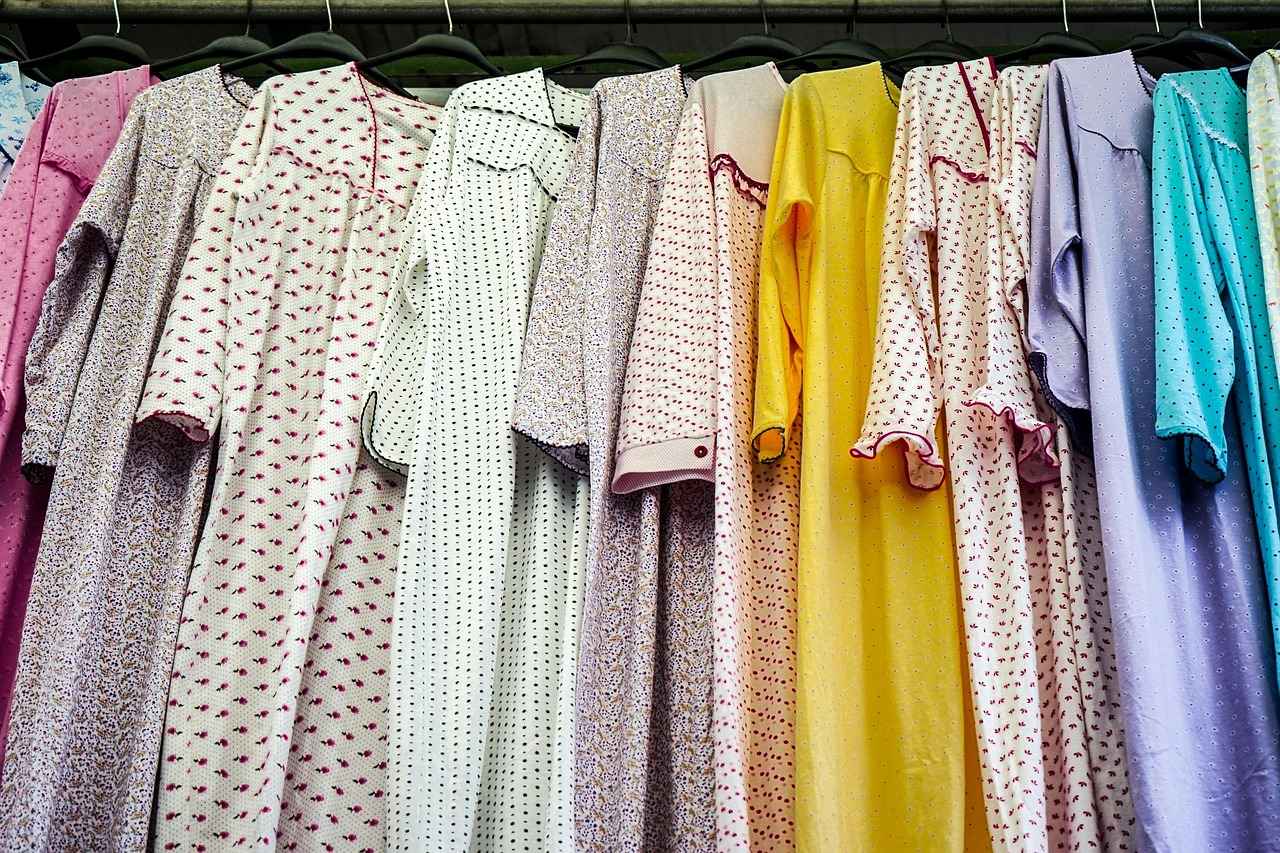
What Features Should You Look for in Sleepwear?
When it comes to achieving a restful night’s sleep, the importance of sleepwear cannot be overstated. The right sleepwear can significantly enhance comfort, regulate body temperature, and support overall sleep quality. In this section, we will delve into the essential features you should consider when selecting sleepwear to ensure you enjoy a peaceful slumber.
- Breathability: One of the most critical features of sleepwear is its ability to allow air circulation. Fabrics that are breathable help to prevent overheating during the night, which can disrupt your sleep cycle. Look for materials such as cotton or bamboo that naturally promote airflow.
- Moisture-Wicking Capabilities: If you tend to sweat while sleeping, moisture-wicking sleepwear is essential. This feature draws moisture away from the skin, keeping you dry and comfortable throughout the night. Fabrics designed for athletic wear often incorporate moisture-wicking technology, making them suitable for sleepwear as well.
- Ease of Movement: Comfort is paramount when it comes to sleepwear. Choose garments that allow for unrestricted movement, such as loose-fitting pajamas or nightgowns. Tight-fitting clothing can restrict circulation and lead to discomfort, making it harder to relax and fall asleep.
- Temperature Regulation: Quality sleepwear should help regulate your body temperature. Look for materials that adapt to your body’s needs, providing warmth in colder months and coolness during warmer seasons. This adaptability can greatly enhance your sleep quality.
- Softness: The feel of the fabric against your skin is crucial. Sleepwear made from soft materials not only enhances comfort but also promotes relaxation. Fabrics like modal or jersey knit are known for their soft texture and are excellent choices for sleepwear.
- Durability: Investing in high-quality sleepwear is essential for long-lasting comfort. Look for well-constructed garments that can withstand repeated washing without losing their shape or softness. Durable fabrics ensure that your sleepwear remains comfortable over time.
- Hypoallergenic Properties: For those with sensitive skin, hypoallergenic sleepwear can prevent irritation and allergic reactions. Fabrics that are free from harsh chemicals and dyes are ideal for ensuring a comfortable night’s sleep.
In summary, when selecting sleepwear, it’s essential to consider features such as breathability, moisture-wicking capabilities, and ease of movement. These elements not only contribute to a more restful sleep environment but also enhance your overall comfort and well-being. By choosing sleepwear that incorporates these features, you can significantly improve your sleep quality and enjoy the restorative benefits of a good night’s rest.
Moisture-Wicking Properties
When it comes to a restful night’s sleep, the choice of sleepwear plays a pivotal role. Among the various features that enhance sleep quality, stand out as particularly beneficial. This article delves into the science behind moisture-wicking sleepwear, exploring how it works and why it is essential for those who tend to overheat during the night.
Moisture-wicking refers to the ability of certain fabrics to draw moisture away from the skin to the surface of the material, where it can evaporate more easily. This process is crucial for maintaining dryness and comfort, especially for individuals who sweat during sleep. Fabrics designed with moisture-wicking technology can significantly enhance your sleep experience.
- Enhanced Comfort: By keeping your skin dry, moisture-wicking sleepwear helps prevent discomfort caused by sweat accumulation.
- Temperature Regulation: These fabrics assist in regulating body temperature, making them ideal for both hot summers and chilly winters.
- Improved Sleep Quality: A comfortable sleep environment, free from sweating and moisture, leads to deeper and more restorative sleep.
Moisture-wicking fabrics are typically made from synthetic materials like polyester or nylon, which are engineered to facilitate the movement of moisture. When you sweat, these fabrics pull the moisture away from your skin and spread it across a larger surface area. This allows for quicker evaporation, keeping you feeling cool and dry throughout the night.
Investing in moisture-wicking sleepwear offers several advantages:
- Odor Control: Many moisture-wicking fabrics are treated with antimicrobial properties, which help to reduce odor caused by sweat.
- Durability: These fabrics are often more durable than traditional cotton, maintaining their performance after multiple washes.
- Variety of Styles: Moisture-wicking sleepwear comes in various styles, from fitted pajamas to loose-fitting nightgowns, catering to personal preferences.
While anyone can enjoy the comfort of moisture-wicking sleepwear, certain groups may find it particularly beneficial:
- Hot Sleepers: Individuals who tend to overheat at night will appreciate the cooling effect of moisture-wicking fabrics.
- Active Individuals: Those who exercise regularly and may experience night sweats can benefit from sleepwear that keeps them dry.
- People with Skin Sensitivities: Moisture-wicking fabrics can minimize skin irritation by reducing dampness against the skin.
To ensure the longevity and effectiveness of your moisture-wicking sleepwear, proper care is essential:
1. Wash in cold water to preserve the fabric's properties.2. Avoid fabric softeners, as they can coat the fibers and reduce moisture-wicking capabilities.3. Air dry or tumble dry on low heat to prevent damage.
In summary, moisture-wicking sleepwear is a valuable addition to any sleep routine, particularly for those who struggle with overheating. By understanding how these fabrics work and their numerous benefits, you can make informed choices that enhance your overall sleep quality.
Temperature Regulation in Sleepwear
When it comes to achieving a restful night’s sleep, the role of temperature regulation in sleepwear cannot be overstated. The right sleepwear helps maintain an optimal body temperature, which is essential for quality sleep. This article delves into the importance of temperature regulation in sleepwear, exploring the best materials and features that can enhance your sleep experience.
Maintaining a comfortable body temperature while you sleep is crucial for restorative sleep. When your body temperature fluctuates too much during the night, it can disrupt your sleep cycle, leading to restlessness and frequent awakenings. Quality sleepwear acts as a barrier against external temperature changes, helping you stay cozy in the winter and cool during the summer.
Choosing the right fabric is key to effective temperature regulation. Here are some materials that excel in this area:
- Cotton: A natural fiber known for its breathability and moisture-absorbing properties, cotton helps keep you cool in warm weather while providing warmth during colder nights.
- Bamboo: This eco-friendly fabric is not only soft and luxurious but also has excellent moisture-wicking capabilities. Bamboo sleepwear can help regulate body temperature by drawing moisture away from the skin.
- Merino Wool: Unlike traditional wool, merino wool is lightweight and breathable. It can trap heat when it’s cold and release it when it’s warm, making it a versatile choice for year-round comfort.
- Modal: Made from beech tree pulp, modal is soft, breathable, and moisture-wicking. It’s an excellent option for those who prefer a silky feel against their skin.
The style of your sleepwear can also impact how well it regulates your body temperature. For instance:
- Pajamas: Often designed with long sleeves and pants, pajamas can provide warmth during colder months but may feel too warm in the summer. Opt for lighter fabrics or short-sleeve options in warmer weather.
- Nightgowns: These can be a great choice for temperature regulation as they often allow for more airflow. Look for sleeveless or short-sleeve designs made from breathable materials.
- Sleep Shorts: Ideal for hot summer nights, sleep shorts made from lightweight fabrics can help keep you cool while allowing for freedom of movement.
When shopping for sleepwear, consider the following features to enhance temperature regulation:
- Moisture-Wicking: Look for fabrics that actively draw moisture away from your skin, keeping you dry and comfortable throughout the night.
- Breathability: Fabrics that allow air circulation help prevent overheating, which can be particularly beneficial for those who tend to sweat during sleep.
- Layering Options: Sleepwear that can be layered allows you to adjust your comfort level based on changing temperatures, making it easier to stay comfortable all night long.
In conclusion, understanding the importance of temperature regulation in sleepwear can significantly enhance your sleep quality. By choosing the right materials, styles, and features, you can create a sleep environment that promotes comfort and restful sleep. Investing in quality sleepwear that adapts to your body’s needs is a step towards achieving the rejuvenating sleep you deserve.
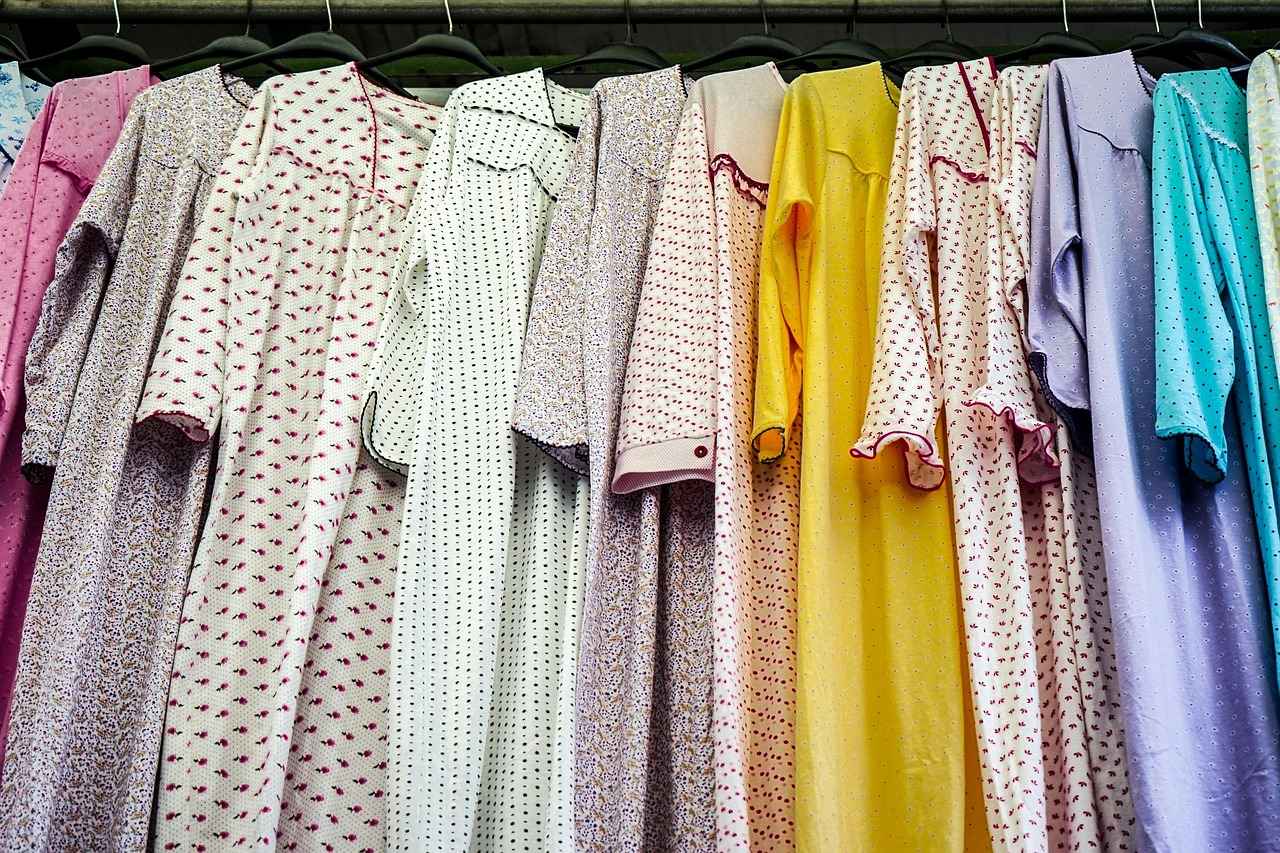
How Do Sleepwear Styles Affect Comfort?
When it comes to achieving a restful night’s sleep, the style of sleepwear you choose plays a pivotal role in your overall comfort level. From cozy pajamas to flowing nightgowns, each style offers unique benefits that can significantly influence your sleep experience.
The style of your sleepwear can affect how comfortable you feel throughout the night. Different designs cater to various preferences and needs, making it essential to select a style that aligns with your personal comfort.
- Pajamas: Often designed with a top and bottom, pajamas provide a structured fit that many find comforting. They can be made from various materials, ensuring warmth in colder months while remaining breathable during warmer seasons.
- Nightgowns: These offer a looser fit, allowing for greater freedom of movement. Nightgowns are often made from soft fabrics, providing a gentle touch against the skin, which can enhance comfort during sleep.
- Sleep Shorts: Ideal for warmer climates, sleep shorts allow for maximum airflow. They can be paired with a light tank top or t-shirt for a relaxed sleep outfit.
- Sleep Sets: Coordinated sets can elevate your sleepwear game, combining style and comfort. These sets often feature matching tops and bottoms, ensuring a cohesive look while providing comfort.
The fit of your sleepwear is just as important as the style. Loose-fitting garments generally allow for better movement and circulation, which can lead to a more comfortable sleep experience. Conversely, tight-fitting sleepwear may restrict movement and cause discomfort, potentially disrupting your sleep.
Fabric choice is crucial when it comes to sleepwear. Breathable materials like cotton and bamboo are excellent for regulating body temperature, while synthetic fabrics might trap heat. Here are some popular fabric options:
- Cotton: Renowned for its softness and breathability, cotton is a top choice for sleepwear. It absorbs moisture well, helping to keep you dry throughout the night.
- Bamboo: An eco-friendly option, bamboo sleepwear is naturally moisture-wicking and antibacterial, providing a luxurious feel against the skin.
- Modal: This fabric is made from beech tree pulp and is known for its silky texture. Modal is breathable and helps maintain a comfortable temperature.
Your individual preferences significantly influence your sleepwear selections. Some people prefer the structured feel of pajamas, while others appreciate the unrestricted comfort of nightgowns. Additionally, factors such as climate, personal style, and even sleep position can guide your choices.
Comfortable sleepwear can contribute to improved mental health by enhancing sleep quality. A good night’s sleep can lead to better mood regulation and overall well-being. Thus, investing in quality sleepwear is not just about physical comfort; it can also positively influence your mental state.
When selecting your sleepwear, consider the following:
- Your sleep environment (temperature, humidity, etc.)
- Your personal style preferences
- The activities you engage in before bed (e.g., reading, watching TV)
By taking these factors into account, you can choose a sleepwear style that not only looks good but also enhances your comfort and sleep quality.
Pajamas vs. Nightgowns: Which is Better?
When it comes to choosing the perfect sleepwear, the debate often centers around pajamas versus nightgowns. Each style has its unique advantages, appealing to different preferences and needs. Understanding these differences can help you make an informed decision that enhances your sleep quality.
Pajamas typically consist of a top and bottom set, providing a more structured fit. This design can be comforting for individuals who prefer a sense of security while they sleep. The snugness of pajamas can help keep you warm during colder nights, making them an ideal choice for winter months.
On the other hand, nightgowns offer a more relaxed and flowy design. This style promotes freedom of movement, which can be particularly beneficial for those who tend to toss and turn during the night. The loose fit of a nightgown allows for better airflow, making it a suitable option for warmer climates or hot summer nights.
Your personal preference plays a significant role in determining which style is best for you. Some individuals may find the structured fit of pajamas comforting, as it provides a sense of security and warmth. Others may prioritize the freedom of movement that nightgowns offer, especially if they prefer to sleep in a more relaxed manner.
- Pajamas: Ideal for those who enjoy a snug fit and warmth.
- Nightgowns: Perfect for individuals who value freedom of movement and breathability.
The choice of fabric can significantly impact your comfort level in either style. Cotton is a popular choice for both pajamas and nightgowns due to its breathability and softness. It helps regulate body temperature, making it suitable for year-round wear.
Bamboo fabric is another excellent option, especially for nightgowns. It is naturally moisture-wicking and antibacterial, providing a soft touch against the skin. This makes bamboo nightgowns a great choice for those who tend to overheat at night.
Choosing the right sleepwear can also have health benefits. Wearing pajamas can help maintain body temperature, which is crucial for a good night’s sleep. Conversely, nightgowns can promote better airflow, reducing the risk of overheating and ensuring a comfortable sleep experience.
Moreover, the right sleepwear can contribute to better sleep hygiene. Establishing a routine that includes wearing comfortable sleepwear signals to your body that it is time to wind down, which can enhance your overall sleep quality.
When deciding between pajamas and nightgowns, consider factors such as your sleeping habits, the climate you live in, and your personal comfort preferences. If you tend to feel cold at night, pajamas may be the better choice. However, if you prefer a more relaxed fit and tend to get hot while sleeping, a nightgown could be more suitable.
Ultimately, both pajamas and nightgowns have their own unique benefits. The key is to choose a style that aligns with your personal comfort and sleep needs. Whether you opt for the structured fit of pajamas or the freedom of a nightgown, investing in quality sleepwear can significantly enhance your sleep experience.
Popular Sleepwear Trends to Consider
In the ever-evolving world of fashion, sleepwear trends have become an essential aspect of personal style and comfort. Staying updated on these trends can help you choose styles that not only look good but also enhance comfort and functionality, ensuring you sleep well. This article delves into the latest sleepwear trends, focusing on materials, styles, and features that can significantly improve your sleep experience.
Understanding current sleepwear trends is crucial for anyone seeking to enhance their nighttime routine. The right sleepwear can make a substantial difference in your overall sleep quality. With a myriad of options available, being aware of what’s trending can help you select pieces that align with your personal preferences and needs.
- Matching Sets: Coordinated pajama sets are making a comeback, offering a polished look while providing ultimate comfort.
- Oversized Fits: Relaxed, oversized sleepwear allows for better movement and is perfect for lounging around the house.
- Eco-Friendly Materials: Sustainable fabrics like organic cotton and bamboo are trending, appealing to environmentally conscious consumers.
- Stylish Nightgowns: Modern nightgowns are designed with elegance in mind, featuring delicate lace and chic cuts that can double as loungewear.
When it comes to sleepwear, the choice of fabric is paramount. Here are some popular materials that are currently in vogue:
- Cotton: Known for its breathability and softness, cotton remains a staple in sleepwear.
- Bamboo: This eco-friendly option is gaining popularity due to its moisture-wicking properties and softness.
- Modal: Made from beech tree pulp, modal is incredibly soft and has a luxurious feel, making it a favorite for sleepwear.
Selecting the right sleepwear involves considering both style and functionality. Here are some tips:
- Fit: Opt for loose-fitting garments for better circulation and comfort during sleep.
- Breathability: Look for fabrics that allow air circulation to help regulate body temperature.
- Moisture-Wicking: If you tend to sweat at night, choose sleepwear with moisture-wicking properties to keep you dry.
The latest sleepwear trends not only reflect current fashion but also prioritize comfort and functionality. For instance, moisture-wicking fabrics can help regulate body temperature, while breathable materials ensure you remain comfortable throughout the night. Choosing sleepwear that aligns with these trends can lead to improved sleep quality and a more restful night.
Your choice of sleepwear should also vary with the seasons:
- Summer: Light, breathable fabrics such as cotton and bamboo are ideal for hot nights.
- Winter: Heavier materials like flannel or thermal fabrics can provide the warmth needed for colder months.
By staying informed about the latest sleepwear trends, you can ensure that your nighttime attire not only looks stylish but also enhances your comfort and sleep quality. Whether you prefer matching sets or eco-friendly materials, the right choice can make a significant difference in your overall well-being.
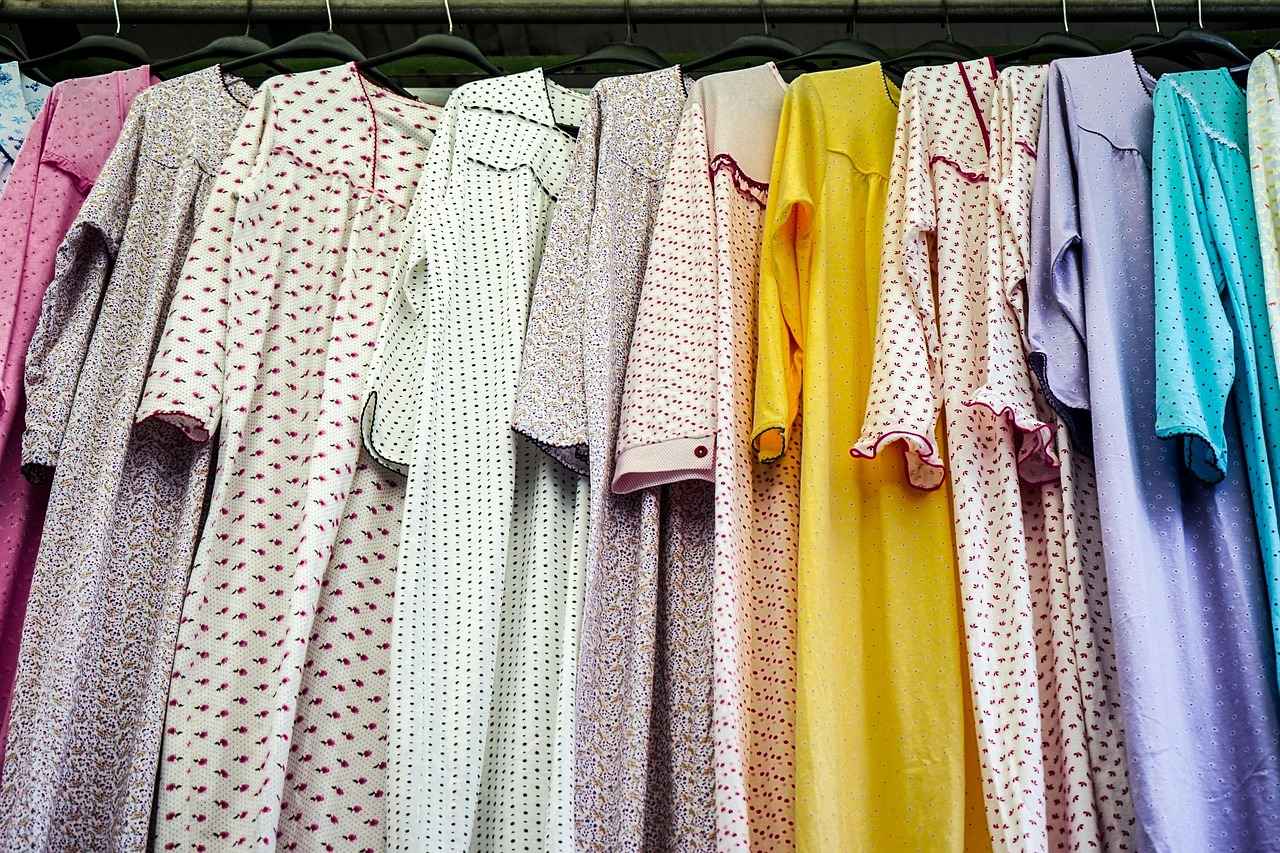
Is There a Connection Between Sleepwear and Mental Health?
Quality sleepwear plays a crucial role in promoting a good night’s sleep, which is fundamentally linked to mental health. When we consider the factors that contribute to our overall well-being, it is essential to recognize that comfortable sleepwear can significantly enhance sleep quality. A restful night can lead to improved mood regulation and a better emotional state, making it vital to choose the right sleepwear.
How Does Quality Sleepwear Impact Sleep Quality?
The influence of sleepwear on sleep quality cannot be overstated. Comfortable fabrics and appropriate fits help create an environment conducive to sleep. When you wear sleepwear that feels good against your skin, it can reduce stress and anxiety, allowing your mind to relax. This relaxation is essential for achieving deep, restorative sleep, which is crucial for maintaining mental health.
What Materials Are Best for Sleepwear?
- Cotton: Known for its breathability and softness, cotton sleepwear allows for air circulation, helping to regulate body temperature and keep you comfortable throughout the night.
- Bamboo: This eco-friendly option is not only soft but also has moisture-wicking properties that keep you dry, contributing to a more comfortable sleep experience.
- Modal: Made from beech tree pulp, modal is incredibly soft and breathable, making it another excellent choice for sleepwear.
Can Sleepwear Fit Affect Your Mental State?
The fit of your sleepwear is equally important. Loose-fitting sleepwear allows for freedom of movement, which can help you feel more relaxed and less restricted during sleep. On the other hand, tight-fitting garments can lead to discomfort, which may disrupt your sleep cycle and negatively impact your mental health.
How Does Sleepwear Influence Sleep Hygiene?
Incorporating quality sleepwear into your nightly routine can enhance your sleep hygiene. When you change into comfortable sleepwear, it signals to your body that it’s time to wind down. This transition can help create a mental association between your sleepwear and relaxation, improving your overall sleep habits.
Creating a Sleep-Inducing Environment
To maximize the benefits of quality sleepwear, it’s essential to pair it with a sleep-inducing environment. A dark, quiet room, combined with comfortable sleepwear, can significantly enhance your ability to fall asleep and stay asleep. This combination is particularly beneficial for mental health, as it helps to reduce stress levels and promotes a sense of calm.
What Role Does Sleepwear Play in Mood Regulation?
Quality sleep has a direct correlation with mood regulation. Studies show that individuals who experience better sleep quality are less likely to suffer from anxiety and depression. By investing in comfortable sleepwear, you can create a more supportive sleep environment, leading to improved mental well-being.
Final Thoughts on Sleepwear and Mental Health
In summary, the connection between sleepwear and mental health is significant. By choosing quality sleepwear that promotes comfort and relaxation, you can enhance your sleep quality and, in turn, improve your mental health. Prioritizing comfortable sleepwear is a simple yet effective step towards achieving better emotional well-being.
Sleepwear and Its Role in Sleep Hygiene
When it comes to achieving a good night’s sleep, sleep hygiene plays a crucial role. One often-overlooked aspect of this routine is the choice of sleepwear. Incorporating quality sleepwear into your nightly regimen can significantly enhance your ability to wind down and signal to your body that it’s time to relax. This article delves into the importance of sleepwear, its impact on sleep hygiene, and how it can improve your overall sleep quality.
The right sleepwear can create a conducive environment for sleep by promoting comfort and relaxation. When you wear comfortable, breathable fabrics, your body can regulate its temperature more effectively, which is vital for achieving restorative sleep. Quality sleepwear also contributes to a psychological signal that indicates to your mind and body that it’s time to transition into sleep mode.
Choosing the right sleepwear can help create a sleep-inducing environment. For instance, wearing lightweight, breathable fabrics can prevent overheating, which is a common disruptor of sleep. Fabrics like cotton and bamboo are excellent choices as they allow for airflow and moisture absorption, keeping you comfortable throughout the night.
- Breathability: Look for materials that allow air circulation, preventing you from getting too hot.
- Moisture-Wicking: Fabrics that wick away sweat can keep you dry and comfortable, enhancing sleep quality.
- Fit: Choose sleepwear that fits loosely to allow for freedom of movement during sleep.
The fit of your sleepwear can have a significant impact on your comfort level. Loose-fitting garments often allow for better movement, while tight-fitting styles can restrict circulation and lead to discomfort. This discomfort can prevent you from falling into a deep, restorative sleep.
There is a strong connection between quality sleep and mental health. When you wear comfortable sleepwear, you are more likely to experience better sleep quality, which can positively influence your mood and overall mental well-being. A restful night can lead to improved focus, emotional stability, and a more positive outlook on life.
Pairing your quality sleepwear with other sleep hygiene practices can further enhance your sleep quality. This includes creating a dark, quiet room and establishing a consistent bedtime routine. When your body associates your sleepwear with relaxation and sleep, it becomes easier to fall asleep and stay asleep.
Natural fabrics, such as cotton and bamboo, are often recommended for sleepwear due to their breathable properties. These materials help to regulate body temperature and wick moisture away from the skin, ensuring a comfortable sleep experience. On the other hand, synthetic fabrics may trap heat and moisture, potentially disrupting your sleep.
In conclusion, the role of sleepwear in sleep hygiene cannot be understated. By choosing quality sleepwear that fits well and is made from breathable materials, you can significantly enhance your sleep quality and overall well-being. Investing in the right sleepwear is a simple yet effective step towards achieving better sleep hygiene.
Creating a Sleep-Inducing Environment
Creating a sleep-inducing environment is essential for achieving quality rest. It involves more than just having a comfortable mattress and cozy blankets; it requires a holistic approach that includes your sleepwear, bedroom conditions, and nighttime routine. By focusing on these elements, you can significantly improve your sleep quality and overall well-being.
A sleep-inducing environment helps signal to your body that it’s time to relax and unwind. Quality sleepwear plays a pivotal role in this process. When paired with a conducive atmosphere, it enhances your ability to fall asleep quickly and stay asleep longer.
- Lighting: A dark room encourages the production of melatonin, the hormone responsible for regulating sleep. Consider using blackout curtains or an eye mask to block out any light.
- Noise Levels: A quiet room minimizes disturbances. White noise machines or earplugs can help drown out unwanted sounds.
- Temperature: An optimal sleeping temperature is typically between 60°F and 67°F (15°C to 19°C). Adjust your thermostat and consider breathable sleepwear to help maintain this range.
- Comfortable Bedding: High-quality pillows and mattresses can make a significant difference. Ensure your bedding complements your sleepwear for maximum comfort.
Choosing the right sleepwear is crucial for comfort and temperature regulation. Fabrics like cotton and bamboo are breathable, allowing your skin to breathe while you sleep. This can prevent overheating, which is a common issue that disrupts sleep. Additionally, comfortable sleepwear can make you feel more relaxed, further enhancing your sleep environment.
Establishing a consistent nighttime routine signals your body that it’s time to wind down. Incorporate activities such as reading, meditating, or taking a warm bath into your routine. Wearing quality sleepwear during these activities can help you transition more smoothly into sleep mode.
Optimizing your bedroom is vital for a sleep-inducing environment. Here are some practical tips:
- Declutter: A tidy space can promote a sense of calm. Remove any distractions or clutter that might keep your mind active.
- Aromatherapy: Scents like lavender and chamomile can promote relaxation. Consider using essential oils or scented candles to create a soothing atmosphere.
- Limit Screen Time: Exposure to blue light from screens can interfere with melatonin production. Try to limit screen time at least an hour before bed.
When you combine quality sleepwear with a sleep-friendly environment, the benefits multiply. You are more likely to experience:
- Improved Sleep Quality: The right sleepwear and environment can help you fall asleep faster and stay asleep longer.
- Enhanced Relaxation: Comfort in your sleepwear can lead to a more relaxed state, making it easier to drift off.
- Better Mood and Energy Levels: Quality sleep contributes to better mental health and increased energy during the day.
In summary, creating a sleep-inducing environment is a multifaceted approach that includes thoughtful choices in sleepwear and bedroom conditions. By focusing on these elements, you can significantly enhance your sleep quality, leading to improved overall health and well-being.
Frequently Asked Questions
- What should I look for when choosing sleepwear?
When selecting sleepwear, focus on features like breathability, moisture-wicking capabilities, and ease of movement. These elements play a crucial role in ensuring a restful sleep experience.
- Are natural fabrics better than synthetic for sleepwear?
Generally, natural fabrics like cotton and bamboo are preferred for sleepwear as they are more breathable and hypoallergenic. However, synthetic fabrics can offer durability and moisture-wicking properties that might suit some individuals.
- How does the fit of sleepwear affect my sleep quality?
The fit of your sleepwear can significantly impact comfort. Loose-fitting garments allow for better movement and circulation, while tight-fitting styles may restrict movement and cause discomfort during the night.
- Can quality sleepwear improve my mental health?
Yes! Comfortable sleepwear can enhance your sleep quality, which plays a vital role in mood regulation and overall mental well-being. A good night’s sleep can set a positive tone for your day.
- What sleepwear styles are best for comfort?
It really depends on personal preference! Pajamas offer a structured fit, while nightgowns provide freedom of movement. Try different styles to find what feels best for you!
